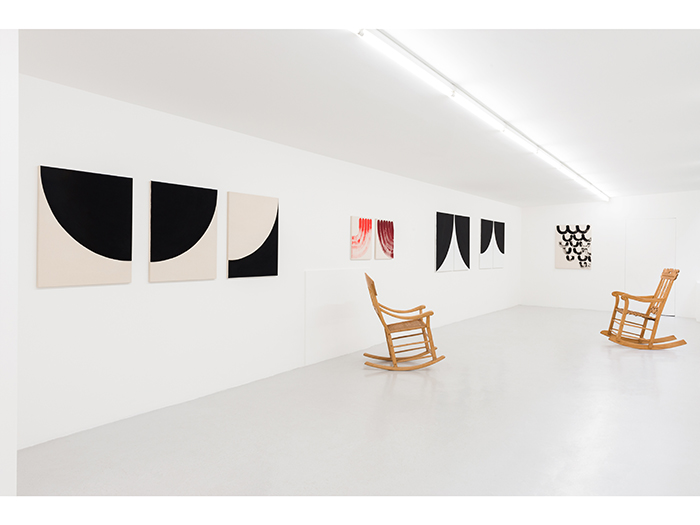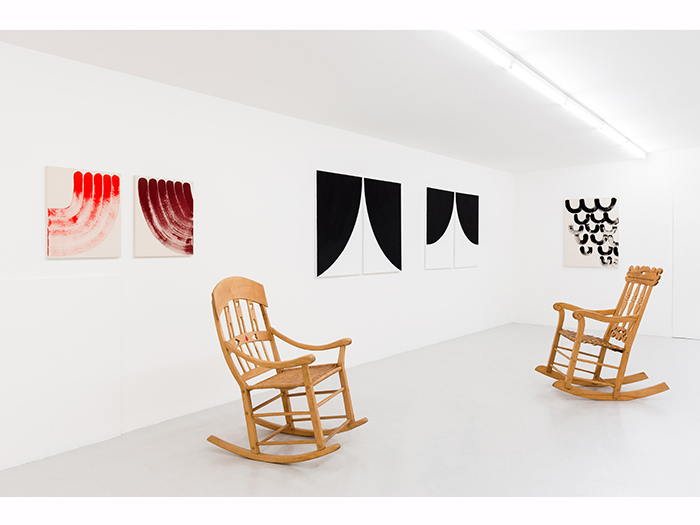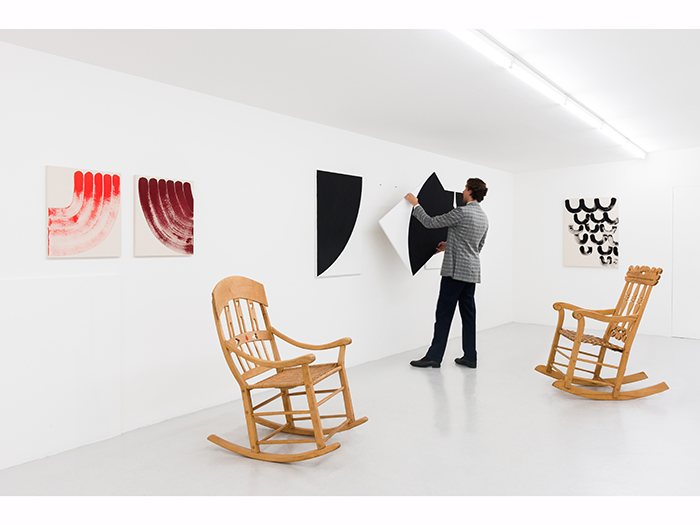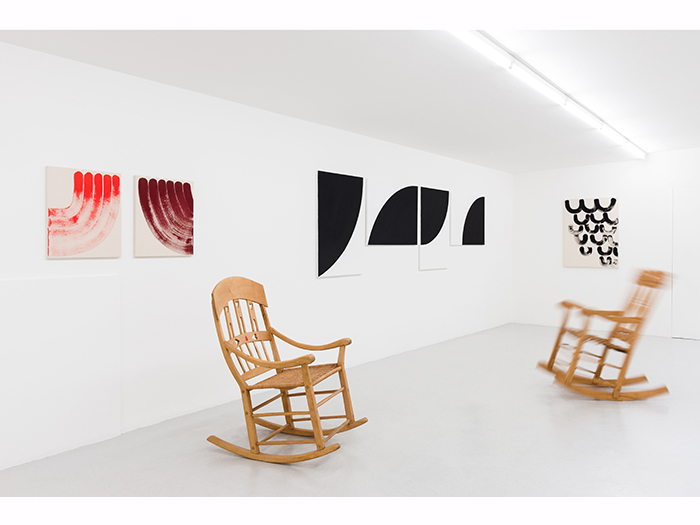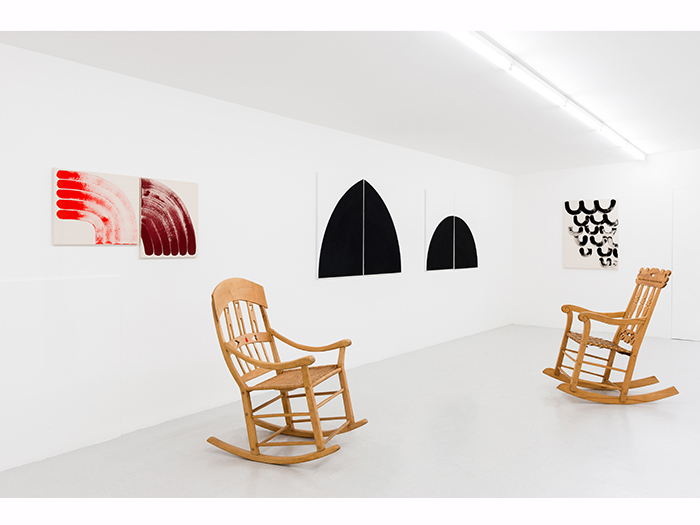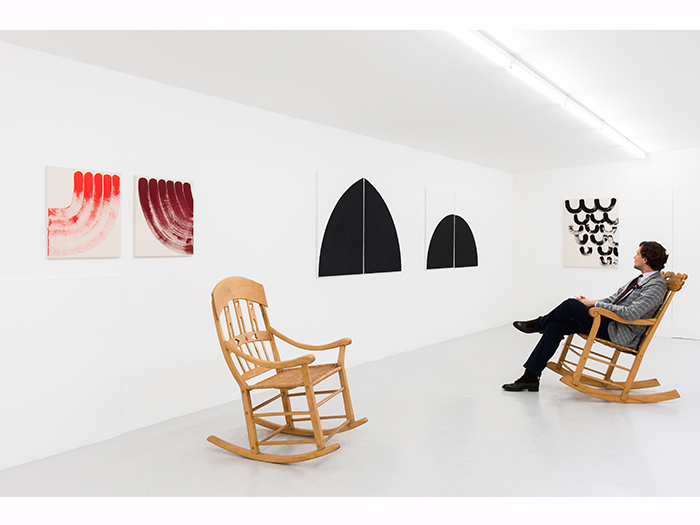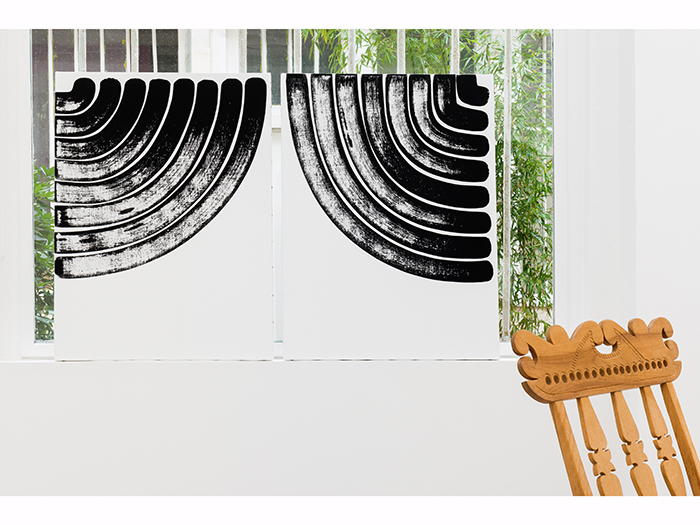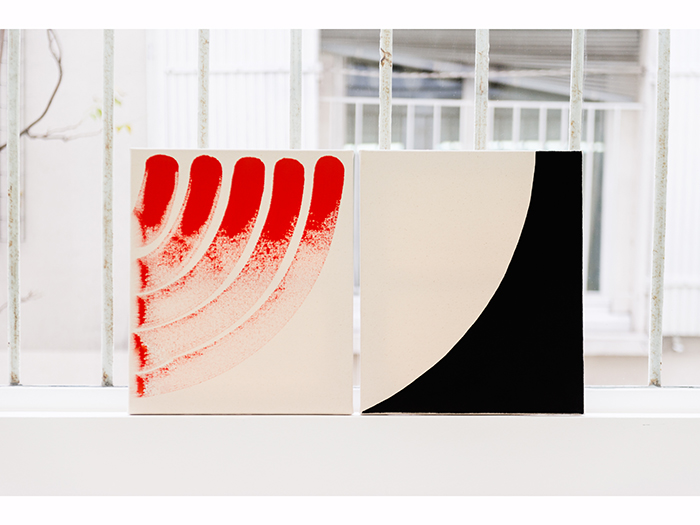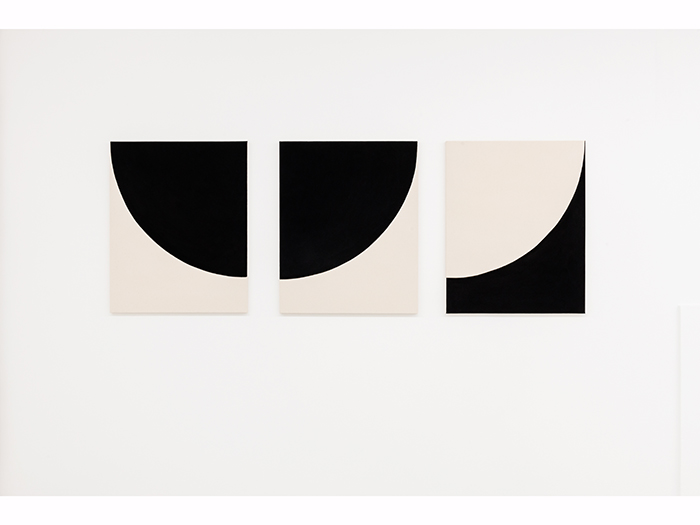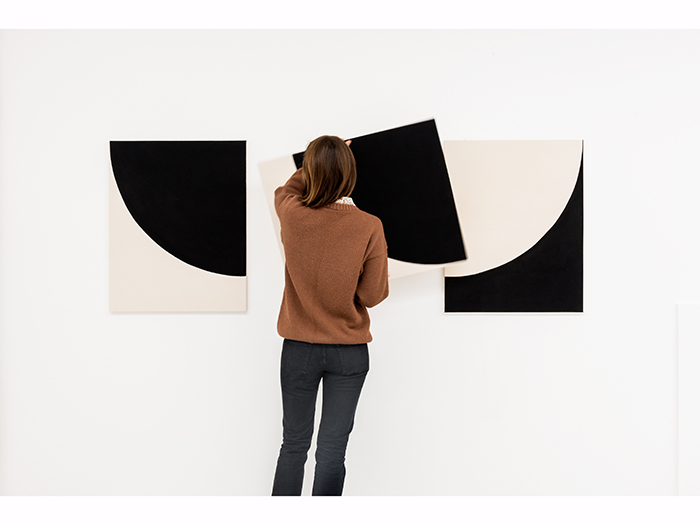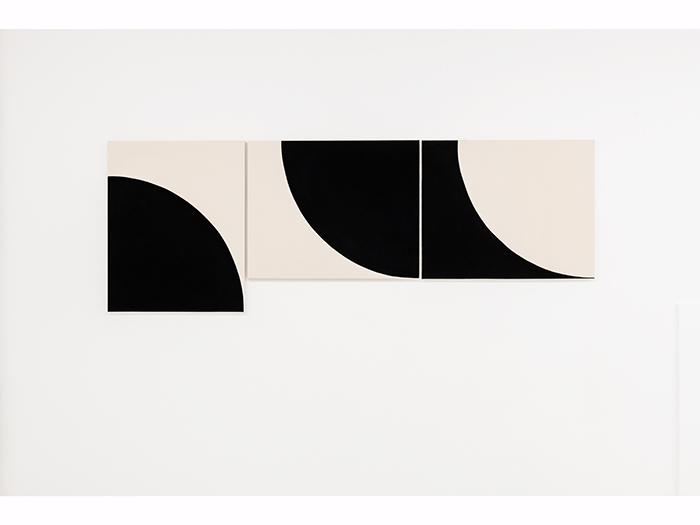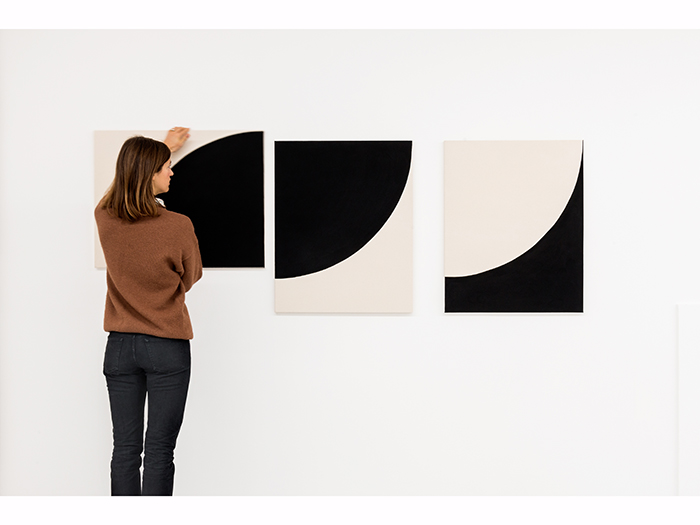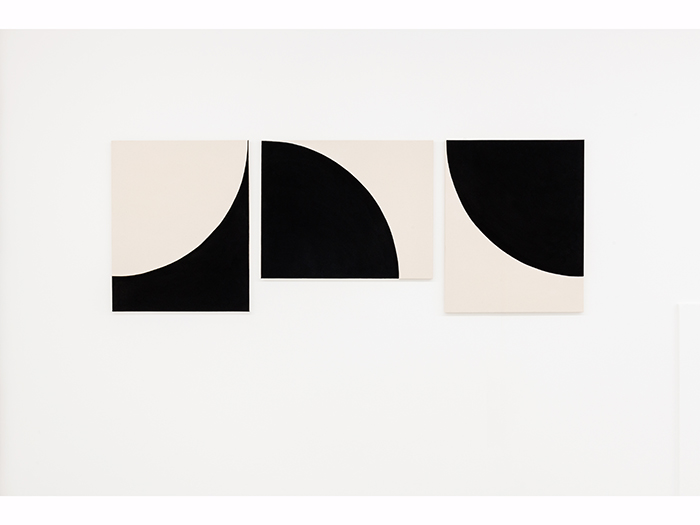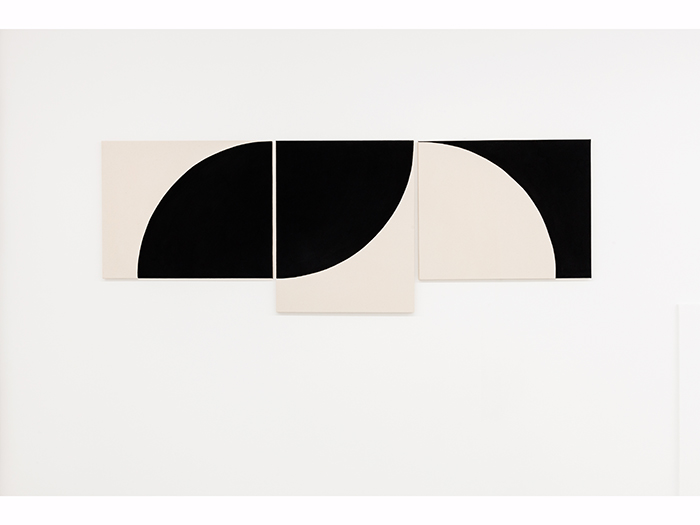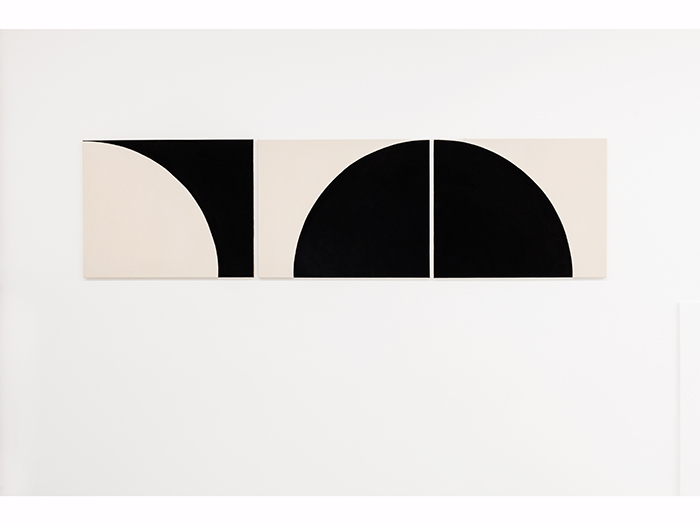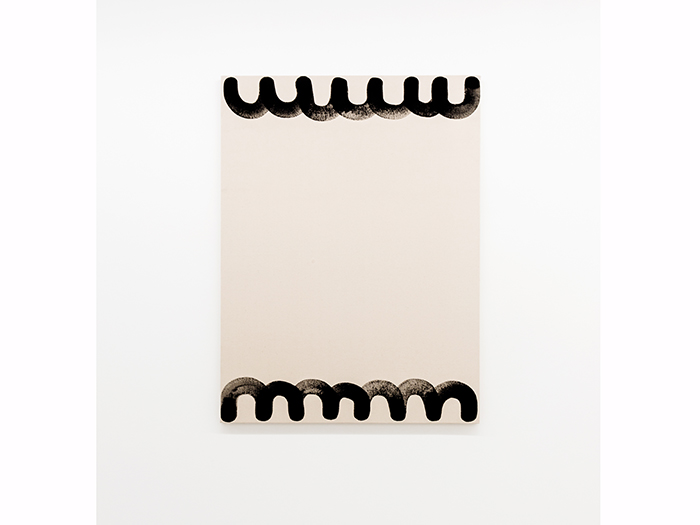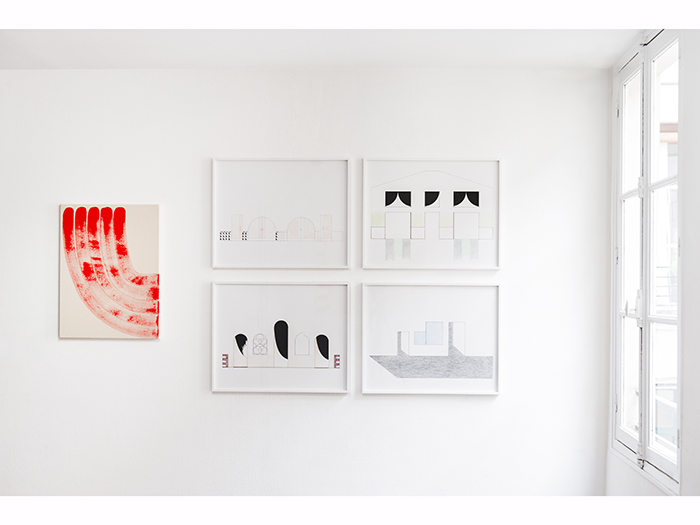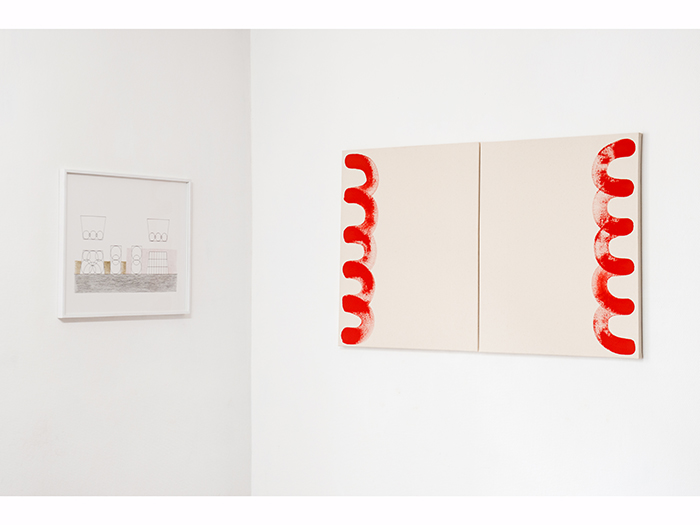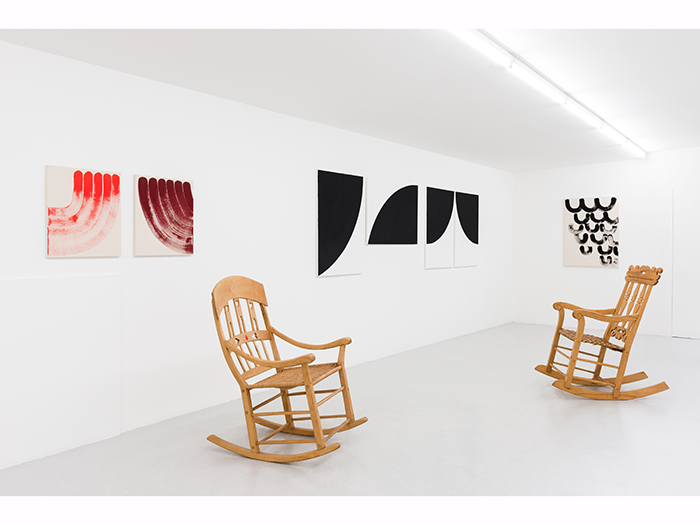
The starting point of Elvire Bonduelle’s « Rotating Paintings » is a visual motif which is as simple and factual as possible: the curved line formed by a curtain blowing out of the rectangle of a window. From this vision, the artist has created a series of ruler drawings that have been characteristic of her production for a few years. She then extracts this motif from its initial context in order to submit it to a set of operations that have led to hard edge abstract paintings, in an accepted filiation with the master of the genre, Ellsworth Kelly.
The result is visually very efficient: the eye gets lost in the abyss of darkness, while the whiteness brings it back to the surface of the artwork. The artist has revealed the impact of this striking contrast through a set of paintings that stand out because of their mode of presentation: their fate is not about being immutably presented as a line on the white wall of the gallery but rather to be arranged in changing shapes (triptych, quadriptych), each combination offering a different vision to the eye. Indeed the gallery owner is commissioned by the artist - just like a performer would be- to operate a rotation of their artworks, preferably unbeknownst to the spectator, in order to defy them, test their attention span but also to let doubt interfere with the whole process.
The aim of the prank being played here is to bring the spectator to think about what they are seeing, to train their eyes. It is an issue that was already tackled by Elvire Bonduelle during her previous exhibition at galerie laurent mueller, « Salle d’attente III », during which the artist said: ‘everything is here: quite often we don’t see anything. We force our eyes, by absolutely wanting to see here, now, in three minutes or thirty seconds.’
However Elvire Bonduelle’s point does not end here and other rotating paintings that abandon the hard edge aesthetic but take on curved motifs extracted from reality are testament to that. These artworks show the gradual wearing out of the paint brushed away on the surface to be painted. The brush is run from the top edge of the canvas towards its bottom right or left edge, until the pictorial substance runs out. Then the brush is being dipped and run again in order to recreate the same movement.
Elvire Bonduelle’s « Rotating Paintings » re-establish in a new way the formal practices of some artists from the Concrete Art, BMPT or Support-Surface movements. She uses pertinence and humour but also this false indolence that characterises her so well and triggers a reflection on painting, the act of painting, and the conditions of presentation of the artworks.
Domitille D'Orgeval, 2015
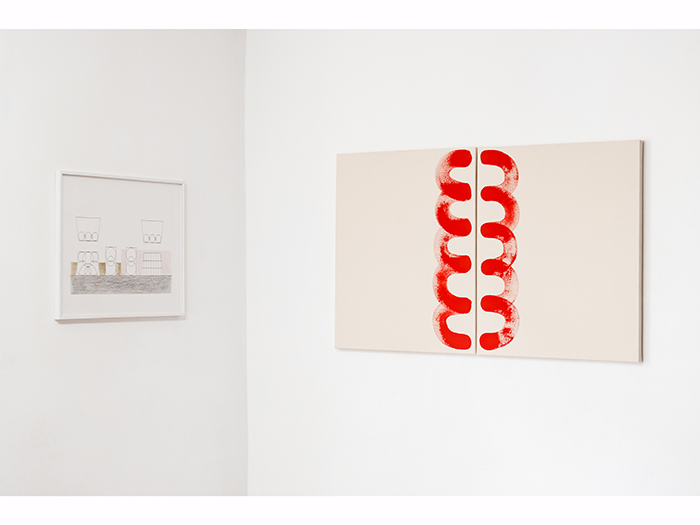
Talking about paintings one often starts immediately to think about traditional works on canvas on which illusion of a pictorial space is created. Painting as an alternative for a window. Our view converges, we look into the painting and for a while we leave the surrounding for what it is. Therefore a painting is always recognized as an autonomous object, as something to be look at or in other words to be looked through like looking out of a window. There are painters who attempt to deny this by processing the canvas; not so much the pictorial space but the painterly effect plays the main role. Instead of the window-effect the qualities of the window-glass are pointed out. How transparent or opaque is the paint, how thick the blobs, the colors. In short, paintings with a particular processing that are nowadays known as zombie-formalism and surface-paintings. Now we look on the window instead of through it and yet we detect the thing as autonomous in the space. Space and surrounding still hardly play a role; the effect is still converging.
If there are disadvantages in painting then certainly this stubborn converging effect is one of them. A diverging working, so from the painting towards it surroundings, hardly occurs. The context in which the work is shown has seldom a direct effect on the image itself as it is much more self-evident in the case of sculpture.
So, how to draw that context actively into the image? I think that here Elvire Bonduelle (1981) has found a manner with her paintings that evoke curtains (hanging in front of window-glasses). She does not deny the limits of a painting; she just uses these by putting the viewer on the wrong track for a short period. The one who doesn't keep continuously an eye on them may not notice that the paintings are now and then quarter turned by the gallerist. Exactly, the context with all its facets suddenly plays an enormous role. The works themselves stay converging, but by this action space is literally in full integrated.
Niek Hendrix, Lost Painters, 2005
